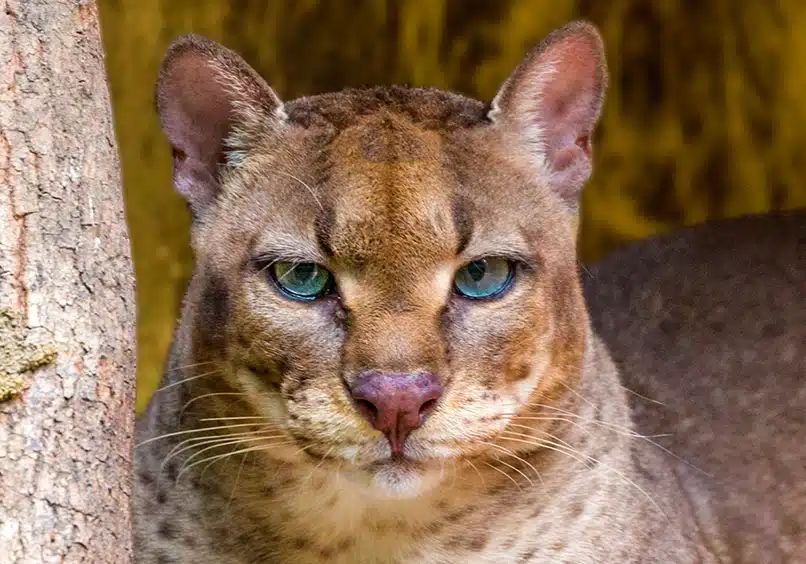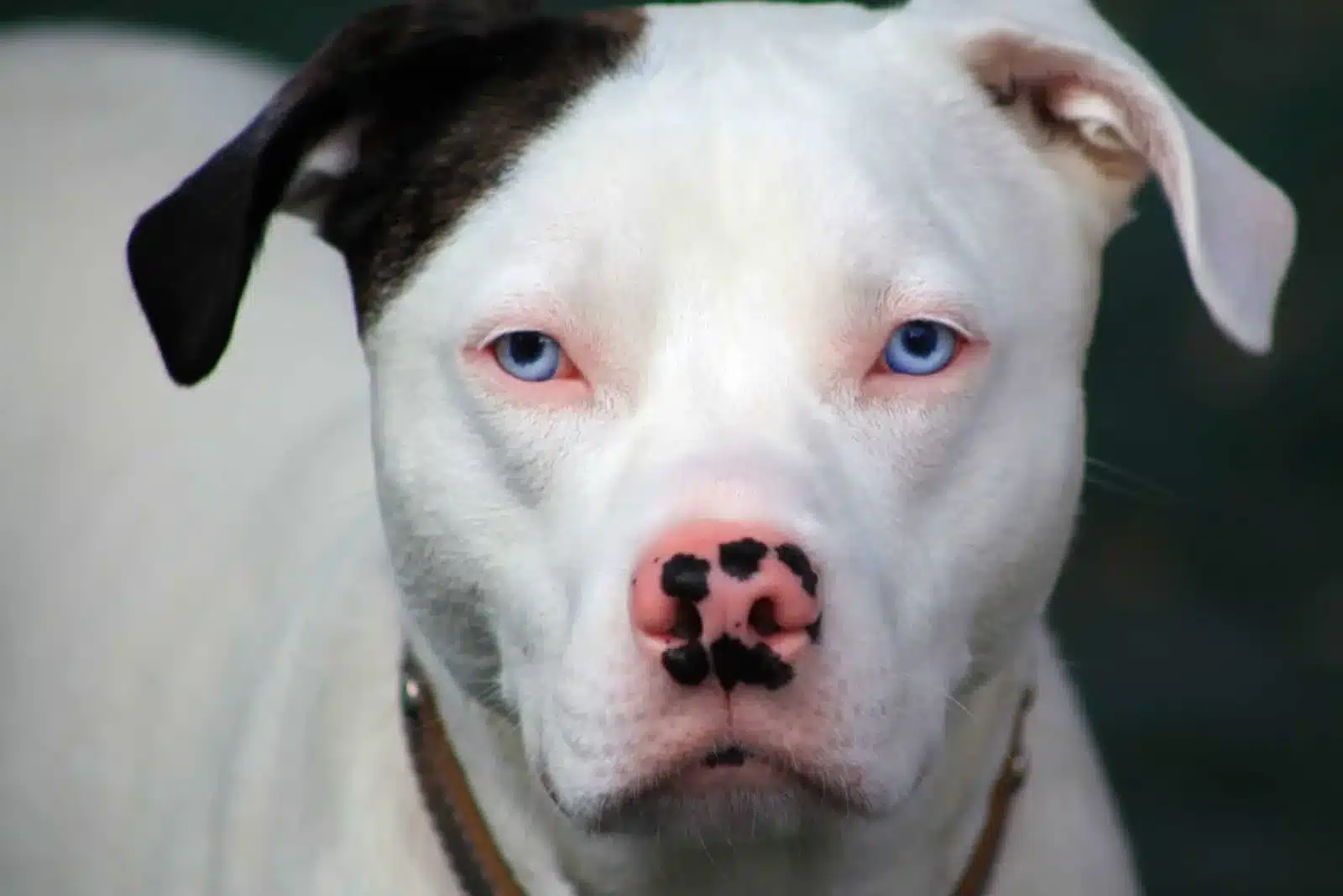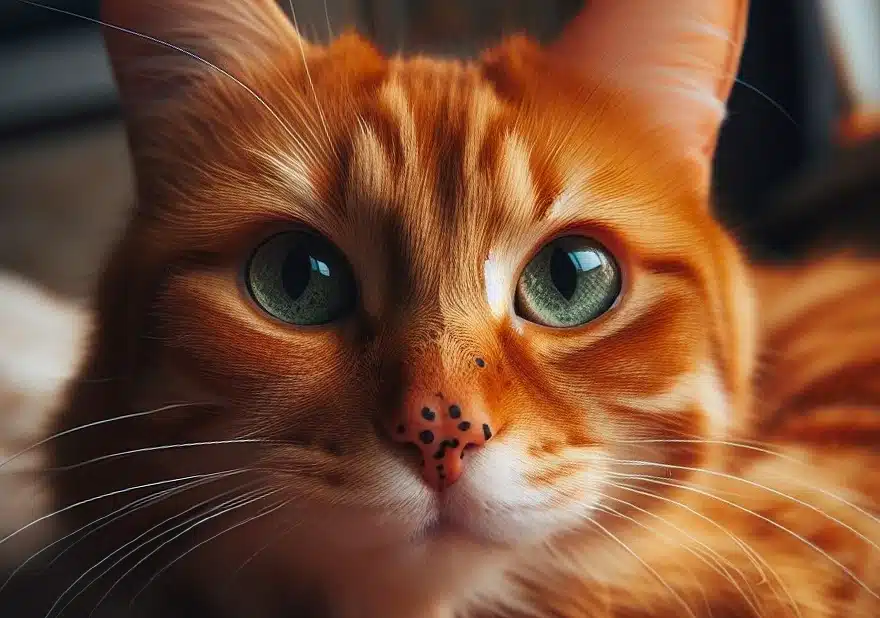Owls Without Feathers: Revealing The Surprising Anatomy Of A “Naked” Owl
Ads Disclosure ?

Owls are among the more recognizable birds in the world, widely known for their distinctive plumage. Feathers are fundamental to an owl’s existence, serving as insulation, camouflage, and aiding in their silent flight.
With no feathers, owls appear almost unrecognizable, challenging our common perceptions of what an owl actually looks like. The sight of an owl devoid of feathers is not only startling because it deviates so much from the expected, but it also provides a stark reminder of nature’s intricacies and how form fits function within the animal kingdom.
Images of owls without feathers (as well as other featherless birds) often spark both amazement and a bit of unease among viewers. These rare glimpses into what lies beneath the feathers of these nocturnal birds stir deep curiosity among people.

Owl Feathers
Owl feathers are integral to their survival, playing critical roles in flight, insulation, and camouflage. Owls are distinguished by their plumage, which varies among species but generally comprises three types: contour feathers, down feathers, and flight feathers.
Contour feathers cover the owl’s body and give it its characteristic shape. These feathers are waterproof and aerodynamic, aiding the owl in reducing noise while flying—a feature that is crucial for stealthy hunting.
Down feathers are soft and lie beneath the contour feathers, providing insulation to keep the owl warm in cold climates. They help in regulating body temperature, which is vital for the birds’ survival in varying weather conditions.
Flight feathers, found on the wings and tail, are robust and broad, allowing for the necessary lift and maneuverability in the air. Owls possess a unique attribute: the leading edges of their primary flight feathers have a fringed design that muffles the sound of air passing over them, enabling silent flight.
| Feather Type | Function | Feature |
|---|---|---|
| Contour | Shape, waterproofing | Noise reduction during flight |
| Down | Insulation | Regulates body temperature |
| Flight | Lift, maneuverability | Fringed edges for silent flight |
An owl’s feathers are subject to molting, a process where old feathers are shed and new ones grow. This cycle ensures that the feathers are kept in optimal condition, which is important for the effectiveness of their functions. Molting occurs gradually, allowing the owl to maintain its ability to fly and protect itself.
With variation in color and patterning, owl feathers also serve as excellent camouflage, blending them into their environment, hiding them from predators and prey alike. The plumage of an owl is not only functional but also adds to the aesthetic beauty of these birds.
What Owls Look Like Without Feathers
Even more so than other featherless birds, owls appear almost unrecognizable without their feathers, as the feathers contribute significantly to their size and appearance. An owl without feathers can resemble a plucked chicken, showcasing the essential role feathers play in providing the owl’s majestic look.
The appearance of owls without their plumage deviates substantially from their recognized look, revealing a form and structure that could be considered unfamiliar or even otherworldly, as can be seen below.
Barn Owl Without Feathers
The Barn Owl, when devoid of feathers, displays a starkly different appearance. Typically known for a heart-shaped face and an elegant poise, the barn owl without feathers appears less graceful and more alien. With a slender body and a large, disproportionately sized head compared to the rest of its body, this featherless sight can be quite unsettling.
A viral sensation began in 2017 with a simple act of curiosity when author Dana Schwartz shared her reaction to discovering what featherless barn owls look like on Twitter. This viral moment peeled back the layers of these mysterious creatures, revealing a side of owls that is seldom seen and highlighting just how crucial feathers are to their identity and survival.
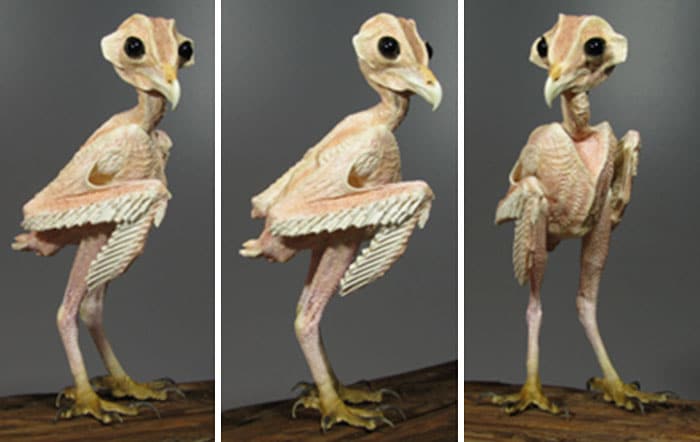
It should be noted that this photo is of a scientific model that was created to show what owls would look like without feathers, rather than a real defeathered bird.
Comparing the naked barn owl, to a feathered one (and to the owl’s skeleton), she Tweeted:
“I just googled what owls look like without feathers and I’m severely shook.”

If we have to admit, we were shook, too. After all, this creature looks more like an alien invader than a wise owl.
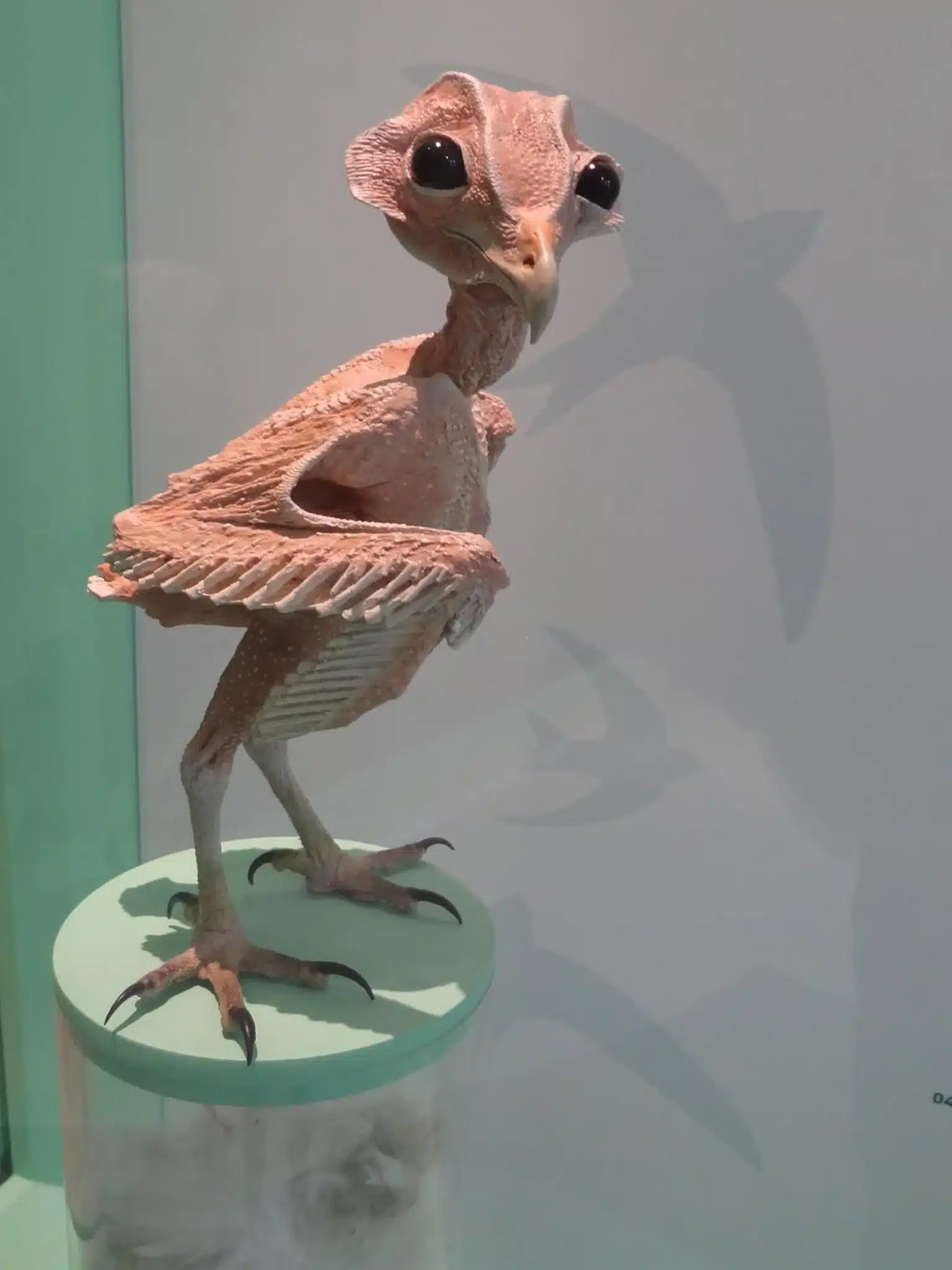
Great Horned Owl Without Feathers
A Great Horned Owl bereft of its feathers would appear even more daunting, given its size and stature. These owls have a formidable presence with feathers, and without them, their muscular frame and substantial talons are more pronounced. The lack of feathers unveils the great horned owl’s true build, which is adapted for hunting and survival, underscoring the raw power these birds possess.
While no photo of these majestic birds without feathers is known to exist, the image below showcases the Great Horned Owl’s unexpectedly “skinny” legs, when their extensive plumage is pulled up!

Great Gray Owl Without Feathers
This illustration of a Great Gray Owl without feathers is a startling and educational sight. While it may seem unimaginable, these large birds are not as bulky as their feathery exterior suggests. In fact, the Great Gray Owl’s size is mainly deceptive, with its bulk being mostly made up of feathers, not body mass.
While a featherless Great Gray Owl might seem unusual or even comical, it’s a stark reminder of the importance of feathers in avian life.
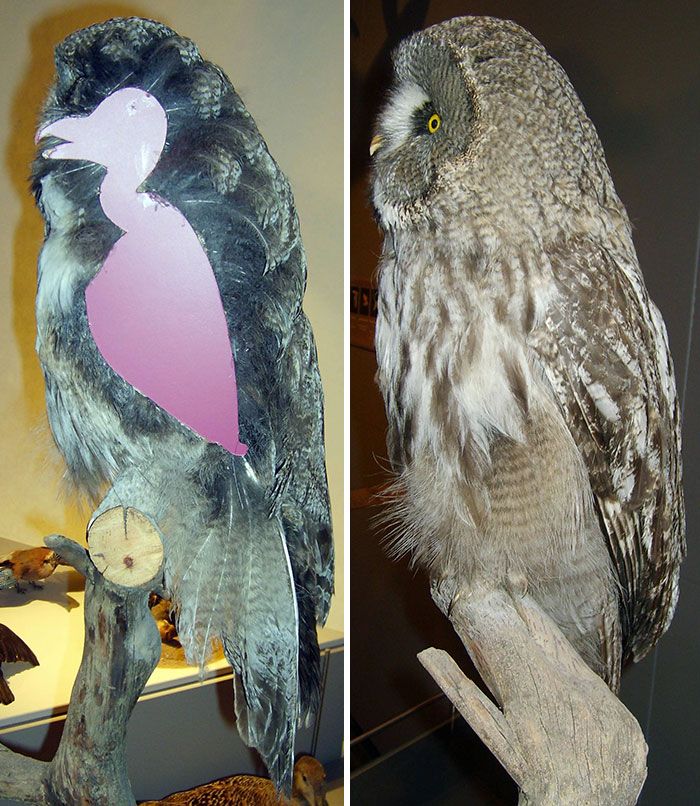
Frequently Asked Questions
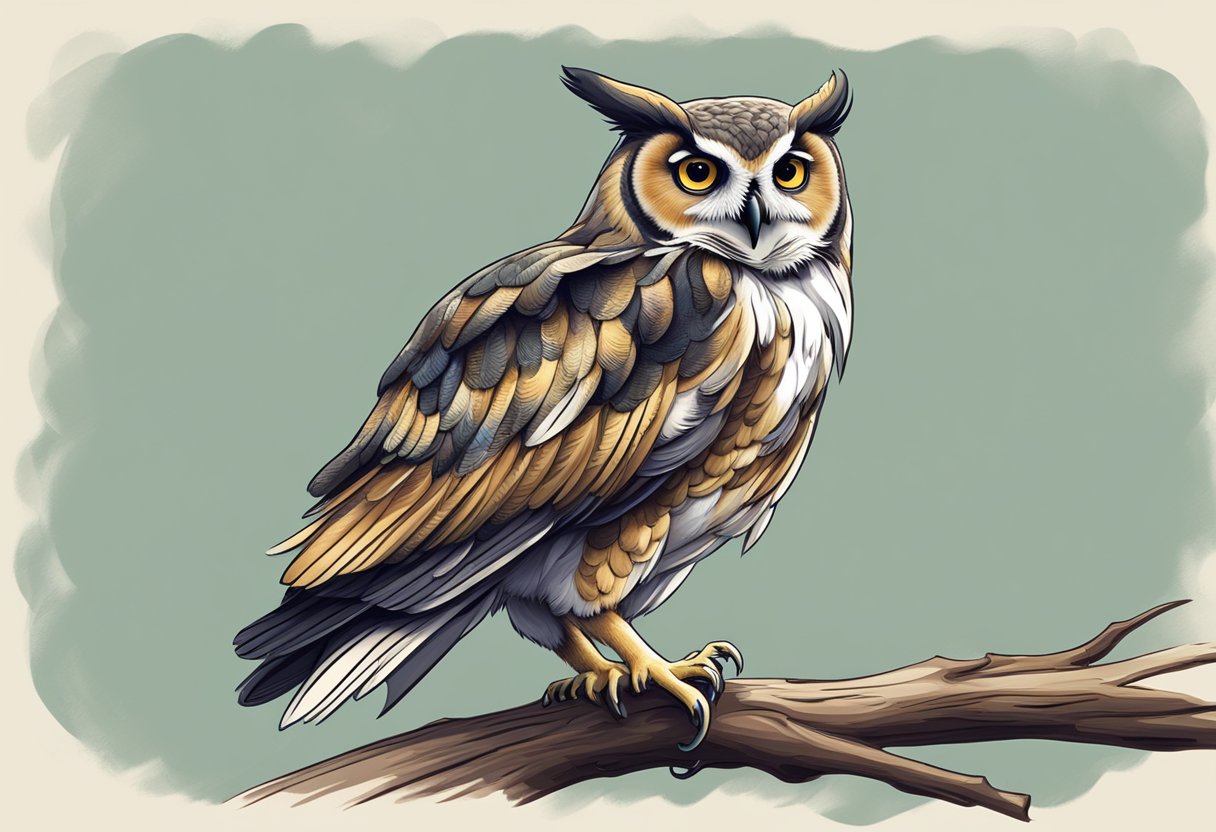
What adaptations allow owls to fly silently?
Owls possess several unique adaptations that enable them to fly without making noise. Their feathers have soft edges which reduce turbulence and the wings are large in relation to their body size, allowing for slower flight and reduced noise. Additionally, the serrated edges of the primary feathers break up airflow and minimize sound.
How do owls molt and renew their feathers?
Owls undergo a process called molting where old feathers are shed and new ones grow in. This typically happens once a year and is essential for maintaining their ability to fly and for insulation. The molting process is gradual to ensure that the owl retains enough feathers to fly effectively during this time.
What is the significance of feathers to an owl’s survival?
For owls, feathers are critical for survival, providing insulation, camouflage, and aiding in hunting. The unique structure of owl feathers enables silent flight, which is essential for stealthily approaching prey. Feathers also help regulate body temperature and protect owls from the elements.
At what age do baby owls develop their full plumage?
Baby owls, or owlets, begin to develop their first feathers at about 3-4 weeks old. However, it can take several months for them to develop their full adult plumage. The exact timing can vary by species and is influenced by factors such as diet and environment.

